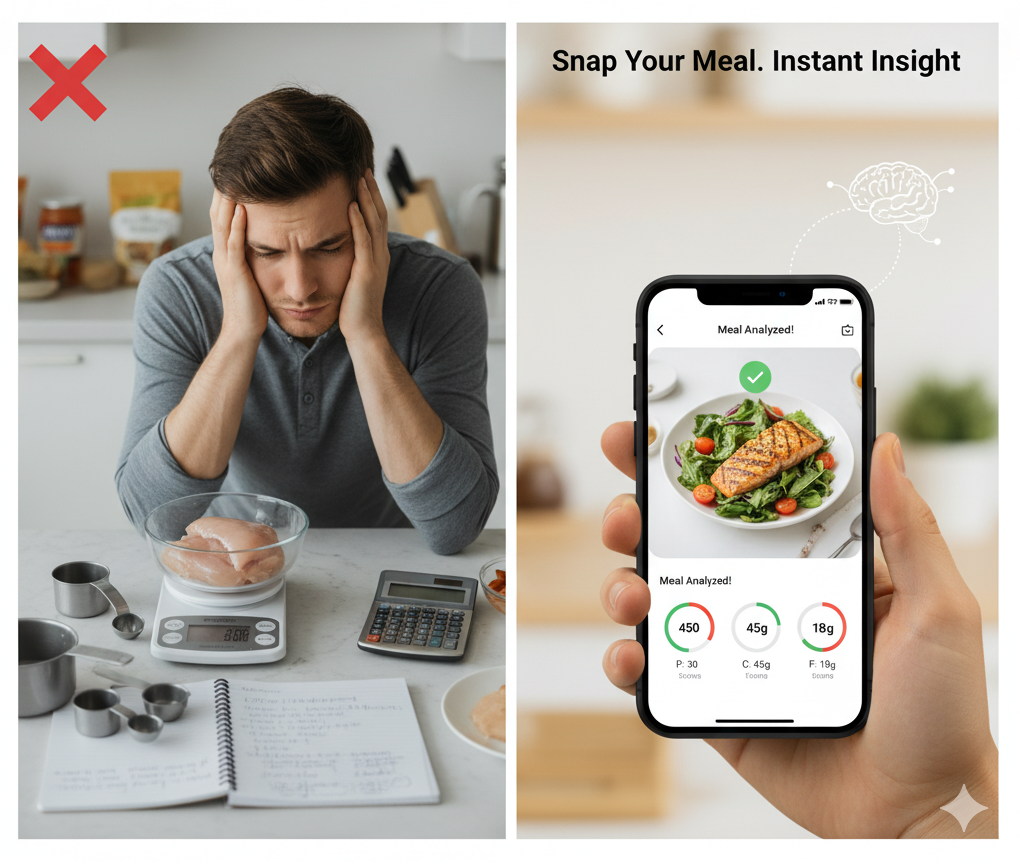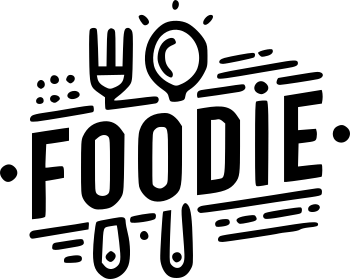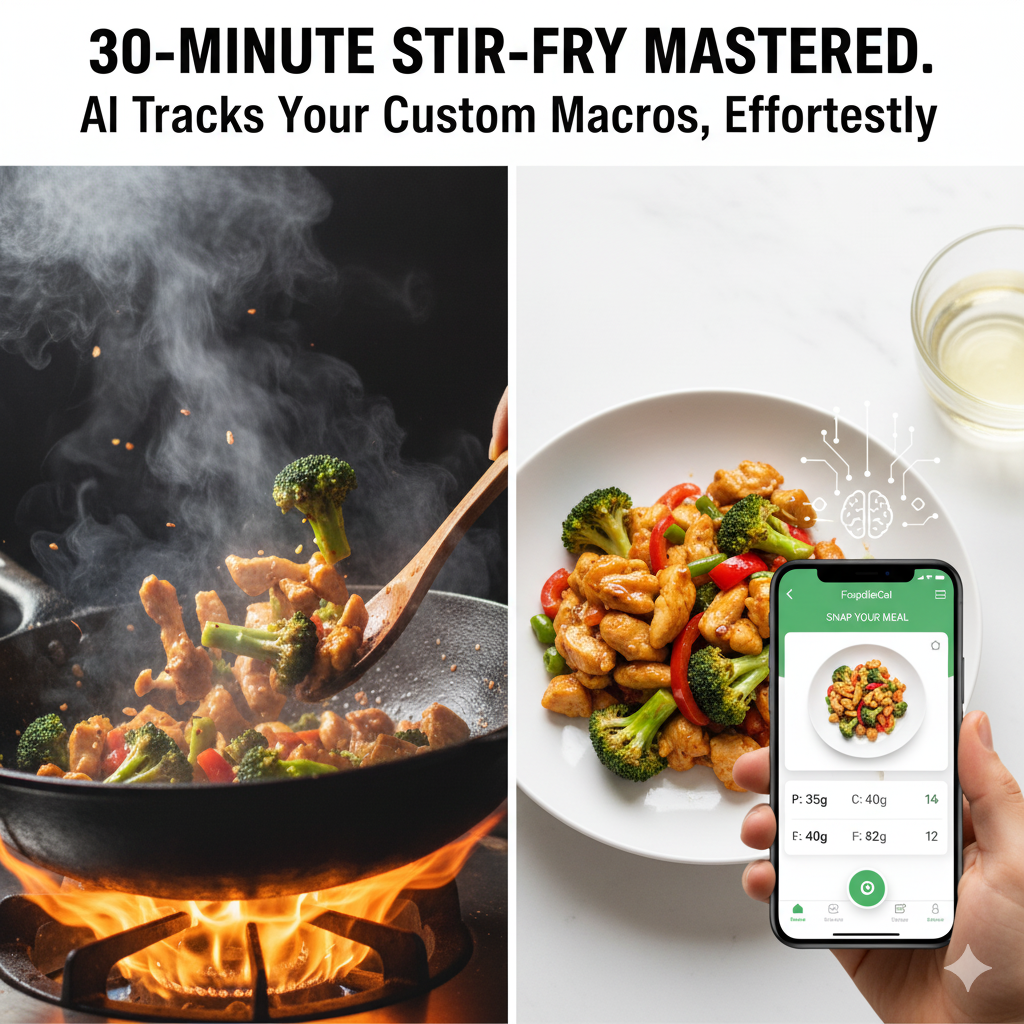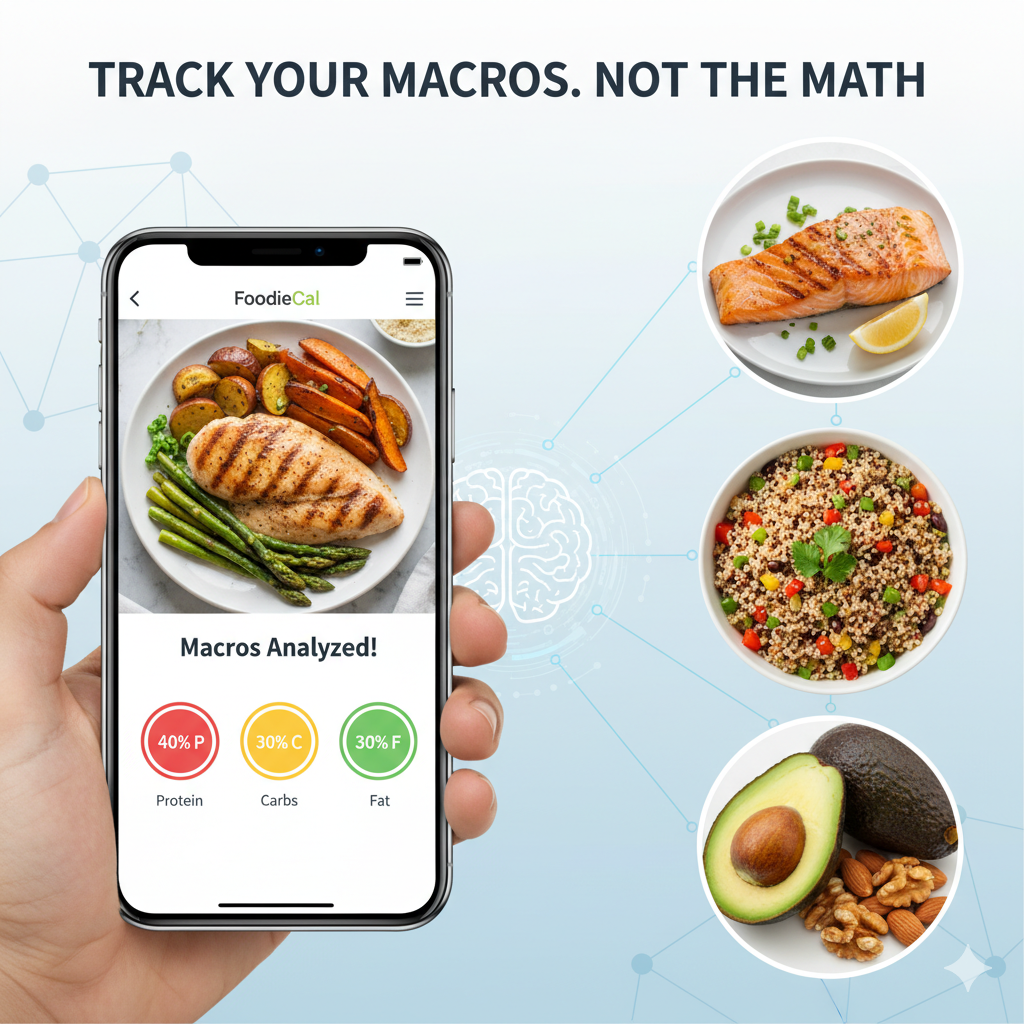

If you’ve ever tried to track your food to lose weight, gain muscle, or just be healthier, you probably started with a noble goal. And you also probably gave up.
If you did, you’re not alone.
For decades, the “solution” for understanding our nutrition has been the food log. The promise was simple: “what gets measured, gets managed.” But the reality was anything but simple. The process itself—the constant weighing, searching, and manual data entry—was so tedious that it became the single biggest reason for failure.
The problem wasn’t your willpower. The problem was the tools.
Let’s break down the three main reasons why traditional calorie counting is a system built to fail, and how technology is finally providing a real solution.
The 3 Great Failures of Manual Food Logging
1. It’s Unbelievably Time-Consuming
Think about the actual work involved in logging a single, homemade meal:
-
Step 1: Find every single ingredient.
-
Step 2: Weigh or measure each one.
-
Step 3: Search a database for “chicken breast, raw,” “olive oil,” “broccoli,” etc.
-
Step 4: Manually adjust the serving size for each item.
-
Step 5: Finally, log the meal.
This “5-minute” task easily becomes a 15-minute chore, three times a day. And that’s before you even log your snacks, your coffee, or that handful of almonds. It’s a part-time job, and the pay (your health progress) feels too far away to justify the daily grind.
2. It’s Riddled with Guesswork and Inaccuracy
This is where the system truly breaks down. What happens when you eat out?
“What’s the calorie count of my friend’s birthday paella?”
“How many grams of pasta are in this restaurant bowl?”
The app prompts you to “guess,” but your guess is just a shot in the dark. Even at home, most of us are terrible at estimating portion sizes. That “one tablespoon” of peanut butter is often two, and that “100 grams” of rice is anyone’s guess.
When your data is inaccurate, your results are inaccurate. This leads to frustration when the scale doesn’t move, and you’re left wondering, “What am I even doing wrong?”
3. The “Log It” Fatigue Leads to Burnout
The final nail in the coffin is “logging fatigue.” It’s the digital version of death by a thousand cuts.
It’s that feeling of dread when you sit down to a meal and your first thought isn’t “this looks delicious,” but “ugh, I have to log all of this.”
This friction builds up. You skip one log, then a full day, and within a week, the app is just another unused icon on your phone. This cycle of starting and stopping doesn’t just halt progress—it makes you feel like you failed, when in reality, the high-friction system failed you.
The Frictionless Future: How AI Changes the Game
For years, the only “innovation” was a bigger food database or a faster barcode scanner. But that didn’t solve the core problem of homemade meals or eating out.
The real solution had to be effortless. It had to be as simple as looking at a plate of food.
And now, it is.
With AI-powered apps like FoodieCal, the entire paradigm of food logging has been inverted. The burden of work has shifted from you to the technology.
Instead of a 5-step manual process, the new process is one step: Take a picture.
How “Snap Your Meal” Solves Everything
Here’s how this new technology works and why it directly solves the three great failures of manual logging:
1. It Sees Your Food (Solves the “Time” Problem)
When you point your camera at your plate, the AI instantly identifies what you’re eating. It doesn’t just see “food;” it sees “a grilled chicken breast, a side of roasted asparagus, and a portion of quinoa.”
2. It Understands Volume (Solves the “Inaccuracy” Problem)
This is the true game-changer. By using your phone’s built-in depth sensor (the same tech that makes “Portrait Mode” work), FoodieCal’s AI doesn’t just identify the food—it calculates its volume. It sees how much chicken is on the plate.
This eliminates the guesswork. You no longer need a food scale or measuring cups. The app analyzes the photo and volume to provide an accurate estimate of calories and macros (protein, carbs, and fat) in seconds.
3. It’s Instant (Solves the “Burnout” Problem)
The entire process—from taking the photo to getting your nutritional breakdown—takes about 10 seconds.
When the friction of logging is removed, the “log it” fatigue disappears. It becomes a simple, sustainable habit, not a dreaded chore. You can finally focus on the insights the app gives you, not the data entry.
The Problem Wasn’t You, It Was the Tool
The desire to be healthier is a universal goal. But for too long, the tools we were given were clumsy, demanding, and unsustainable.
The new generation of AI nutrition trackers understands a simple truth: the best health tool is the one you’ll actually use. By making food tracking as easy as taking a picture, AI removes the friction that caused so many of us to fail.
Now, you can get instant insights into your meals, track your water intake, log your exercise, and get personalized AI suggestions—all in one place, with minimal effort.
If you’ve given up on calorie counting, that’s okay. It’s time to stop logging and start seeing.
Ready to try the future of nutrition? [Download FoodieCal for free] and discover how easy food tracking can finally be.



